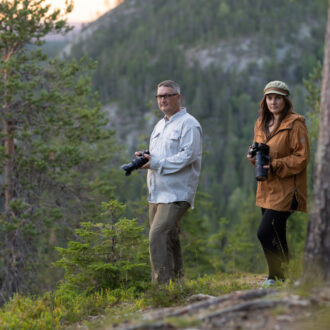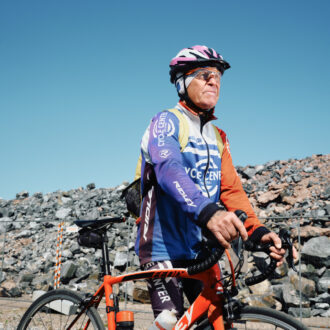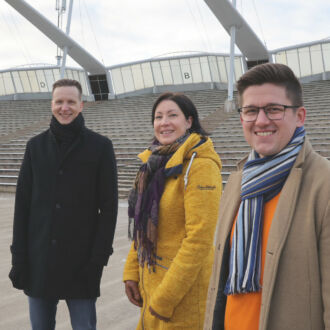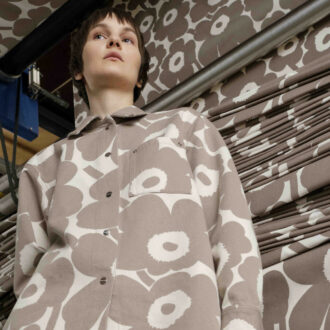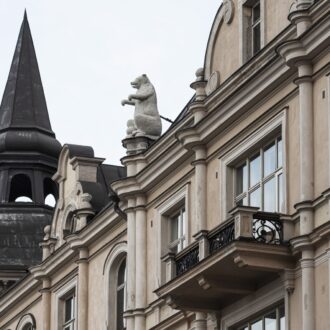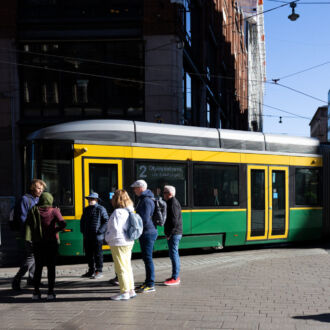Beneath thick white covers lies a mountain of snow – over 200,000 cubic metres (7,000,000 cubic feet), stretching hundreds of metres long and towering up to eight metres (26 feet) high. That’s enough snow to cover around 28 European football fields with a one-metre (three-foot) layer.
Quite a sight in summer.
We are visiting Ruka, one of Finland’s leading ski resorts, in July, and the air is shimmering with heat.
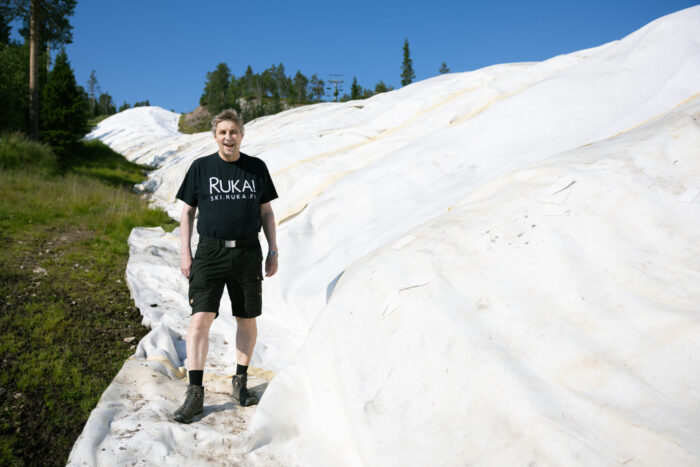
Matti Parviainen has worked at Ruka since 1980.
Ruka’s slope manager, Matti Parviainen, walks along the snowy ridge, carefully avoiding puddles and mud.
A small group of reindeer lounges in the shade, cooling off. It’s hard to imagine that in just a few months, these slopes will be teeming with skiers and snowboarders, thanks to snow saved from the previous winter.
Astounding surroundings and clever solutions
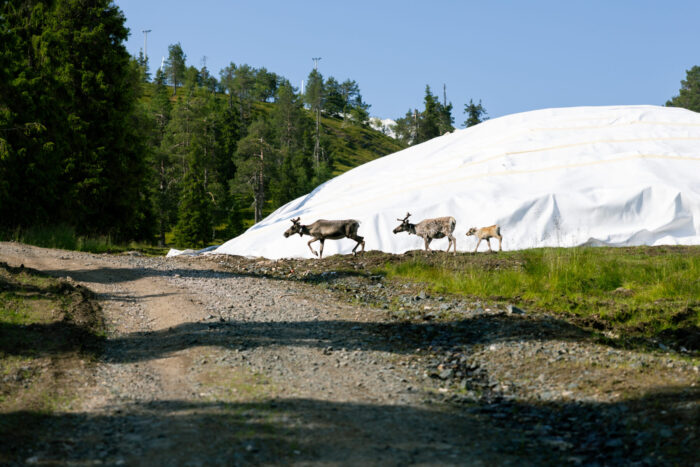
Ruka produces most of its artificial snow during the coldest months of midwinter using snow guns. Making snow in winter is much more environmentally friendly, and also more cost-effective, than during the milder conditions of autumn.
Located in the northern municipality of Kuusamo, near Finland’s eastern border, Ruka is famous for its stunning nature: ancient forests, rushing streams and rolling fells.
Rukatunturi is a fell whose peak rises to around 500 metres (1,600 feet), and the resort boasts 41 slopes and more than 200 skiable days each year, from October to May.
But even here, October skiing would be impossible without a clever solution.
Long before modern refrigeration, people kept food cold using snow or ice, topped with sawdust for insulation. Today, the same idea helps preserve snow itself.
Ruka began experimenting with snow storage in the late 1990s, possibly the first resort in the world to do so. The first large-scale modern tests were done in 2016.
Few know more about it than Parviainen, a lifelong skier who first hit the slopes in the late 1960s at age four, guided by his father, on these very same runs.
“We needed to be able to give visitors a fixed opening date,” says Parviainen. “That’s hard to do if you’re relying on natural snow. And snowmaking in warm, rainy weather just doesn’t make sense.”
Snow farming
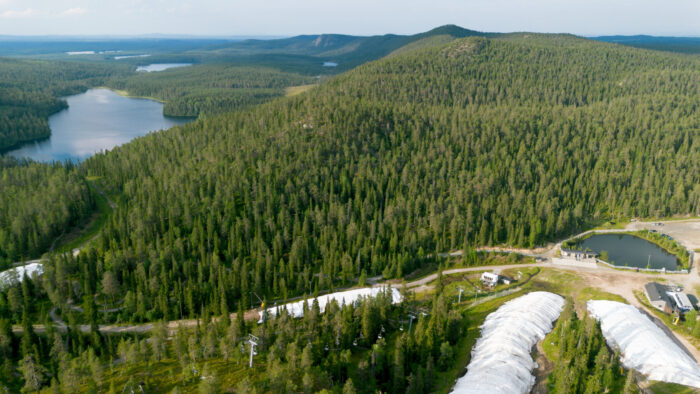
Ruka is one of Finland’s leading ski resorts, alongside Ylläs and Levi, which are located further north. Levi Ski Resort also makes use of stored snow to ensure an early start to the season.
In the early years, Ruka used a small test site for “snow farming.” Methods and results varied, but lessons were learned. And over time, the technique became reliable enough to bank on.
Now, at the end of the ski season, large piles of snow are gathered using snow groomers on the north side of the resort, ready to be revealed again in autumn.
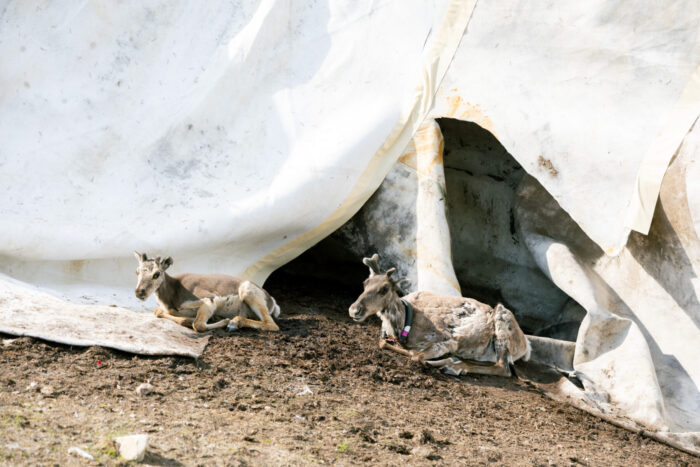
In the reindeer herding area of northern Finland, reindeer roam and graze freely. In summer, they sometimes rest beside the snow piles to keep cool.
There are three snow storage methods that Ruka uses today: sawdust, which preserves 80 percent of the snow but is messy and therefore used sparingly; white insulating fabric, easier to handle but with up to 40 percent snow loss; and a special plastic insulation developed by Finnish company Snow Secure, which offers the best balance, preserving about 80 percent of the snow.
“We’ve studied this for decades,” says Antti Lauslahti, CEO of Snow Secure. “Snow storage is the most environmentally friendly and energy-efficient way to guarantee early snow.”
Their expertise is now being exported to Europe and North America. Finnish snow-how is a true thing.
Getting ready for ski season
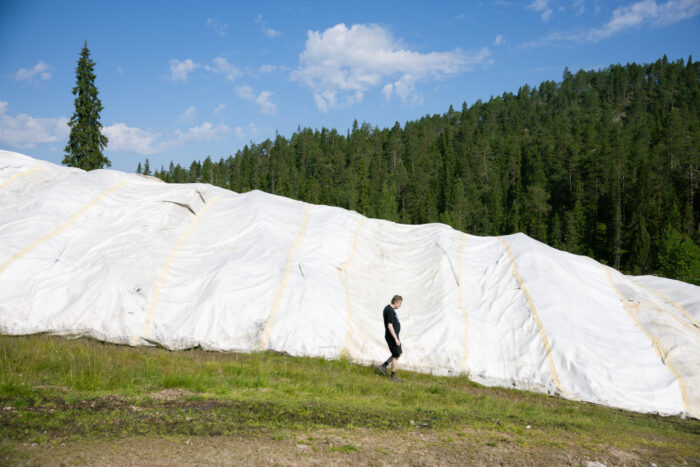
During Matti Parviainen’s lifetime, winters in the north have shortened dramatically. For example, the period of ice cover on nearby Oulanka River has decreased by nearly two months on average over the past 50 years.
When temperatures drop and autumn progresses, the insulation is removed and the preserved snow is spread onto the slopes.
In Ruka, the stored snow is enough to open five runs, each with a snow depth of around 1.6 metres (5.2 feet), providing a solid base for skiers and snowboarders.
Snow is also stored for cross-country skiing, allowing Ruka to open competition-level trails even before the first natural snow falls.
It’s not just curious families and early holidaymakers who can’t wait for the winter season to start. According to Parviainen, international training teams are among the first on the slopes.
“In October, the only real training options worldwide are Ruka or the Alpine glaciers,” he says. “Ruka’s small size is a bonus. A lift ride takes just two minutes, so athletes can do more runs each day.”
And what about Parviainen himself – will he be among the first to go skiing?
“Definitely,” he says. “The first runs of the season after summer always feel great – it’s a good feeling when winter begins.”
Text and photos Emilia Kangasluoma, October 2025
